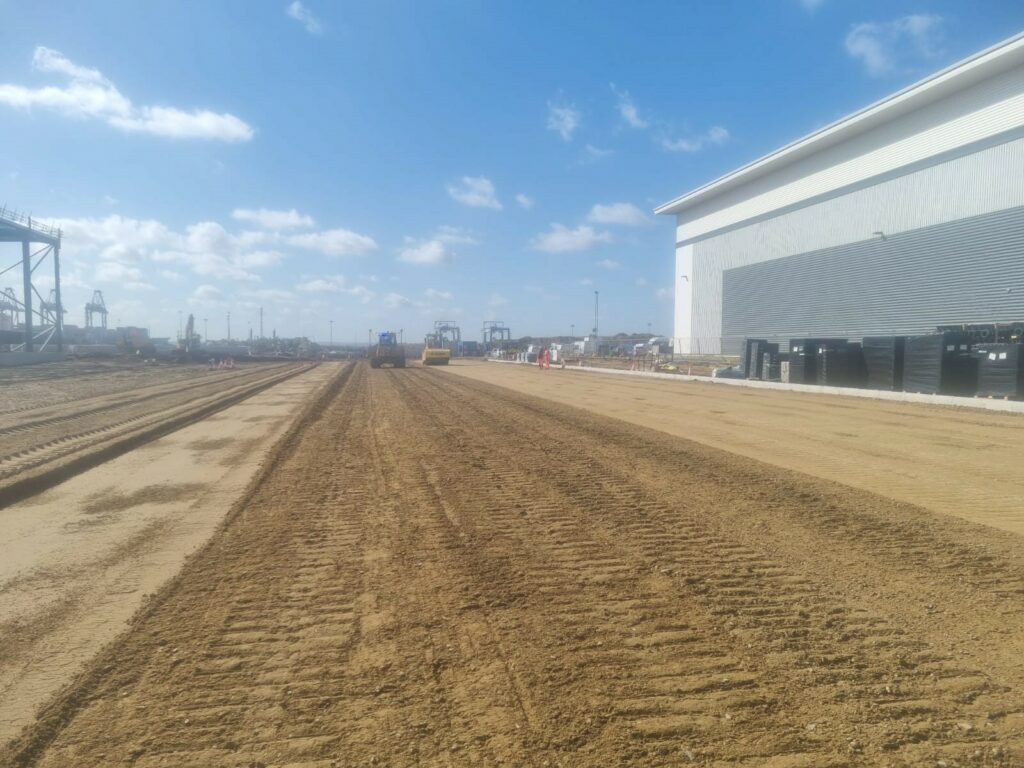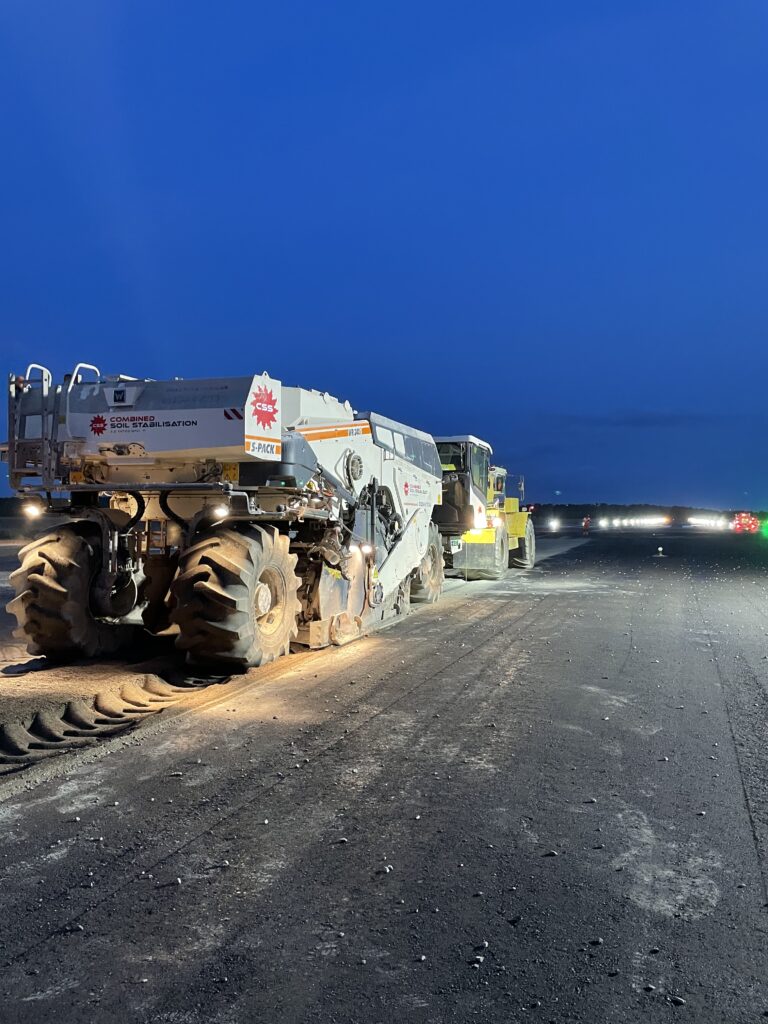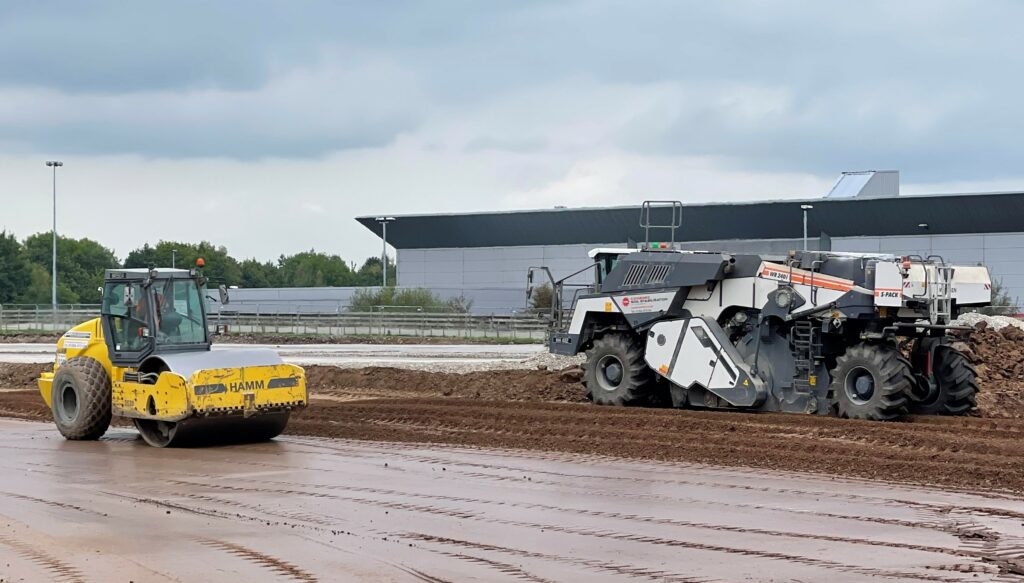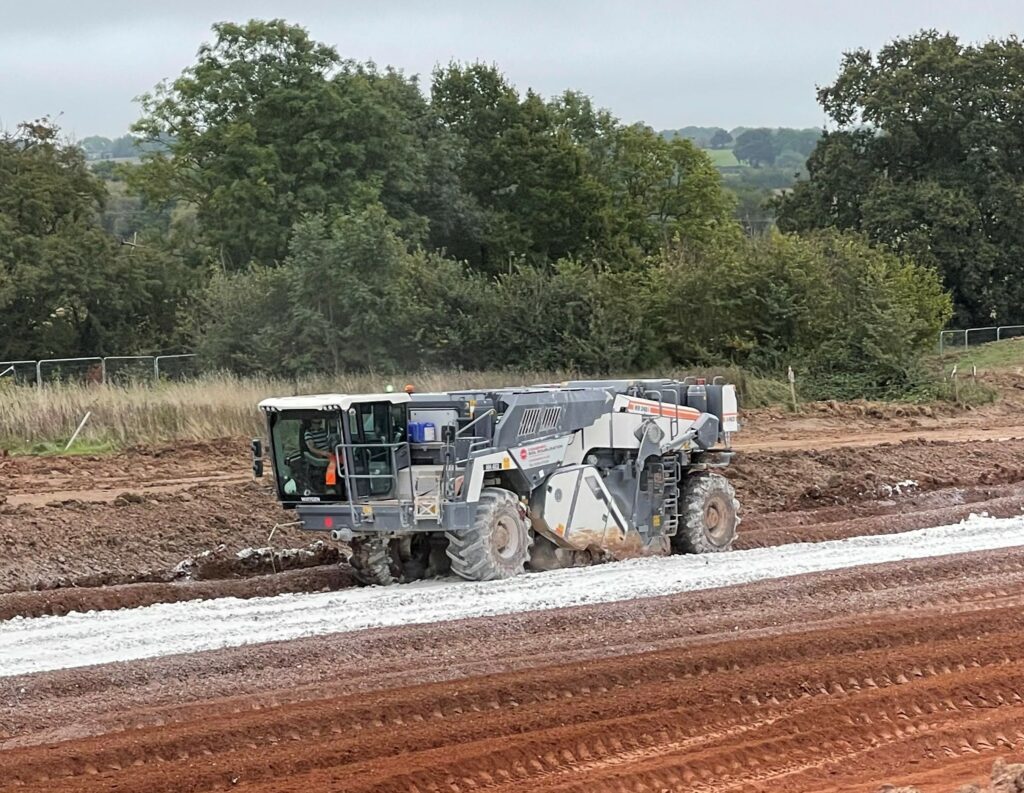
DP World, LONDON GATEWAY PORT
Combined Soil Stabilisation Ltd have completed the first visit of two on a new facility…
Read MoreHeave due to the presence of sulphates need not be an issue
We completed a small commercial warehouse project in Stroud, Gloucestershire. Although by no means our largest project it did have its issues. The site, as can be seen from the first image, was waterlogged. It also suffered from the presence of sulfates which can, if treated with traditional techniques, result in the ground heaving (basically expanding) causing potentially catastrophic structural failure. There are two methods of dealing with sulfates when considering soil stabilisation techniques - remove the sulfate containing material or replace the cement in the stabilisation mix with Ground Granulated Blastfurnace Slag (GGBS).
The water issue was the easiest to deal with on this 13,000sq.m site comprising a building footprint of 6500sq.m supplemented by a 3000sq.m service yard and 3500sq.m car park. The powder mix was designed to cope with the heavy clay and high moisture. The standing water was on the surface and was removed by mechanical means. The sulfate issue however required more thought. We know, through experience and the British Geological Survey map and assessment of
the site investigation report, that sulfates are prevalent in this area and likely to be present.
We proposed taking additional samples at a level well below that to be treated (at dock leveller excavation level which was the deepest) to check for sulfates. Testing of the samples confirmed our suspicion that sulfates were present in some areas of the site. Therefore a 1:3 Lime:GGBS mix to offer the greatest resistance to heave was designed to deal with this and used across the whole site.
In a 'belt and braces' approach we advised the earthworks contractor to over dig the dock leveller area and replace the soil with material won from a higher level to eradicate any potential sulfate risk. Although it is cement and needs 28 days to reach the required strength. But, by carrying out regular testing, we were able to confirm enough strength gain after seven days to allow construction plant to traffic the treated material allowing the programme to be maintained.

Combined Soil Stabilisation Ltd have completed the first visit of two on a new facility…
Read More
Combined Soil Stabilisation have recently completed a project on Southampton Airport.
Read More
Logistics unit on a prominent development close to the M6
Read More
Following working on the South Portal of the Chiltern Tunnels we moved on to the…
Read More